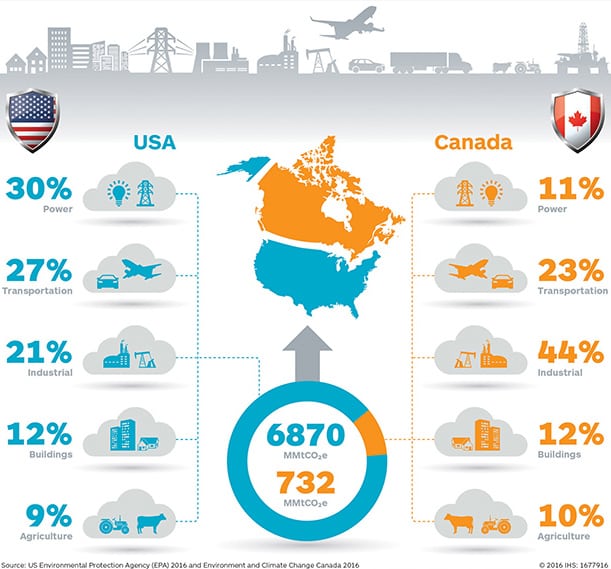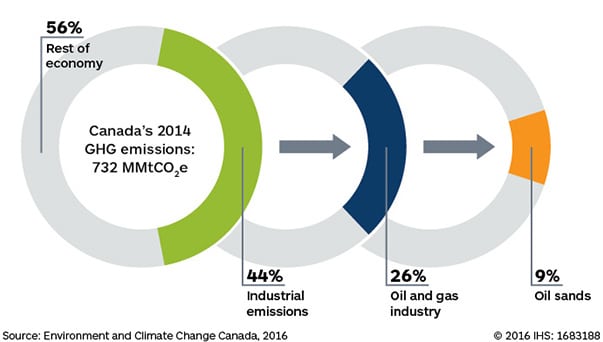Although the U.S. and Canada are both aiming for similar greenhouse gas (GHG) emissions reductions, the two countries are embarking on decidedly different approaches to reaching their goals, according to a report released on August 23.
IHS Markit—a company that provides information, analytics, and solutions to customers in business, finance, and government—developed the report, titled “The State of Canadian and US Climate Policy.” One reason it cites for the different emissions reduction methods is that the makeup of the power sectors in the two countries is vastly different.
In the U.S., the largest GHG emitter is the electric power generation industry. Historically, coal has been the most prominent fuel source for U.S. electricity production, and it is a heavy GHG emitter. As natural gas supplies have increased and the cost of renewable energy has decreased, replacing coal with these lower- and zero-emitting resources has resulted in a natural decrease in GHG emissions.
Canada, however, gets about 80% of its electricity from resources that have always been low- or zero-carbon emitters, mainly hydropower. Rather, its largest emitter of GHGs is the industrial sector (Figure 1), which includes oil and gas production and refining. In the absence of an emissions-intensive power sector, Canada has turned to carbon pricing models in an effort to reduce GHG emissions.
 |
| 1. Comparison of U.S. and Canadian 2014 GHG emissions and contributions of economic sectors to national emissions. Courtesy: IHS Markit/Business Wire |
There are two main designs for pricing carbon. One—known as the cap-and-trade model—caps the total GHG emissions allowed. Allowances can then be used or sold, with prices set by the market. The other method is implementation of a carbon tax. In this case, the government sets the price, sometimes years in advance, and emitters pay their fees based on the quantity of GHGs emitted. No firm limit is established, but the added expense is designed to encourage reducing emissions.
One premise of the report is that Canada’s move toward carbon pricing could hinder Canadian companies’ competitiveness. Specifically, it says, “For firms that compete globally, sufficiently stringent policies can displace investment and emissions to other jurisdictions.”
Canada’s oil and gas industry (Figure 2) would suffer the most, according to the report. “Unilateral climate policy adds cost that could move investment, activity, and associated emissions from Canada to regions with less-stringent policies, with little or no net reduction in global emissions,” it says.
 |
| 2. Share of oil and gas sector of Canada’s total 2014 GHG emissions. Courtesy: IHS Markit/Business Wire |
The electric power generation industry is more insulated from competition due to the technical and economic limitations of large-scale power transmission. The report suggests that because the U.S. is focused on cutting emissions from the power sector, there is less risk of losing business to global competitors.
“This weighs heavily given Canada’s close trading relationship with the United States and its large oil and gas sector which competes globally and with U.S. firms for investment, labor and markets,” said Hossein Safaei, associate director for IHS Energy.
—Aaron Larson, associate editor (@AaronL_Power, @POWERmagazine)
Featured image courtesy: Creative Commons/Nate Ritter (image was cropped to fit size requirements)










